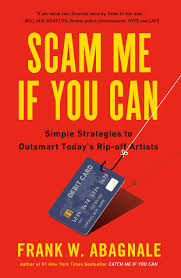My receipt from a very fine local pharmacy listed no copay for me. It included the retail prices that would have been charged for a cash transaction for each three month supply. Citalopram $14, Lisinopril $14, Rosuvastatin $805. My annual Medicare prescription coverage premium is only about $200 and they list Rosuvastatin as a Tier 1 which has no copay. That means the insurer will not get my price of $805 for this. It comes in a pre-packaged bottle of 90-pills made in India. It has been past its patent expiration for a few years. When Good Rx prices are surveyed, the prices range from about $15 to $173 which is what my previous mail-order pharmacy charged me as my co-pay, with a more expensive variant of the same insurance carrier classifying it as a Tier 2. That is why they are my previous pharmacy and I have a new plastic insurance card with the lower premium plan. Good Rx also lists each pharmacy's retail price with a variation from $140 to $765, all at pharmacies or pharmacy divisions that are household names and presumably commercial competitors. And none are $14 like my other generic pills. Something is very amiss.
When I go to buy an artistic Jerry Garcia tie, which either goes with everything or with nothing, the difference from one retailer to the next will typically be a few per cent. All prices are posted. I can decide if it is worth spending extra time and gasoline to save $2. I need not buy the shirt that I will wear with it from the same place. And if Jerry Garcia's pattern is too garish for the infrequent occasions that warrant a tie, I can get one with no pattern for maybe a little less. I am a consumer who need not give a reason for why I opt for one purchase over another. For very large purchases like houses or cars, there is some bargaining room, though the consumer is probably at a disadvantage over the professional agent. Even so, the purchaser can see the home's neighborhood or the car's odometer. It is not a blind purchase. If somebody tried to sell a home far above market value, it wouldn't sell.
While the pharmacy seems different from other retail purchases, it is not modelled after a Middle Eastern shouk or a casino either. We don't bargain our price, though apparently our Part D carriers can leverage what they pay and pass along to us or sometimes not pass along to us. Nor do we expect a bargain on Ladies Wednesday or a discount if the right horse wins at Delaware Park. Instead we are kept in consumer purgatory, wondering why some of what we experience makes little intuitive sense. And it's hard to conclude anything other than our elected officials letting us down in some way.
So why is a generic medicine prebottled in India so much different in any stated price, even under the best conditions, than the other generics? Patent law times exclusivity for the patent holder, and for safety, when a pharmaceutical goes generic, a single competitor will be granted exclusivity for six months to see if the post-marketing generic pill is indistinguishable in any detrimental way from the original. Then it becomes open market, unless a manufacturer wants to corner that market by buying competitors or other legal mechanisms to remain the only production source past patent expiration. A recent
New England Journal of Medicine Perspective Article, using Suboxone as the focus, details the multiple ways a manufacturer can game the regulatory system to maintain post-patent exclusivity and exorbitant pricing that a free market would effectively tame.
https://www.nejm.org/doi/full/10.1056/NEJMp1906680
After forty years of signing prescription pads, becoming proficient at the medication options, including price, for most pharmaceuticals used for endocrine disorders, addressing complaints from patients and sales pitches from company representatives trained to get me to prescribe more, I thought my understanding would be better than it really is. If transparency fails among experienced professionals, the consumers of their doctors' prescriptions have no chance of escaping what registers as "rip-off" and probably really is. We need to start with a better understanding of why one generic has a cash price tag of $14 and another has a cash price tag a minimum of ten times that but often much more. Somebody is making more money than a free market would dictate, some of us are being extorted or even victimized at the peril of our health, and some such as the retailers and distributors are caught in the middle. We consumers deserve better from the officials we choose to represent us. So do our students of all ages who we try to teach the superiority of fair markets that ultimately prevail in America, usually as correction of prior abuse, throughout our history. Correction seems long overdue.

